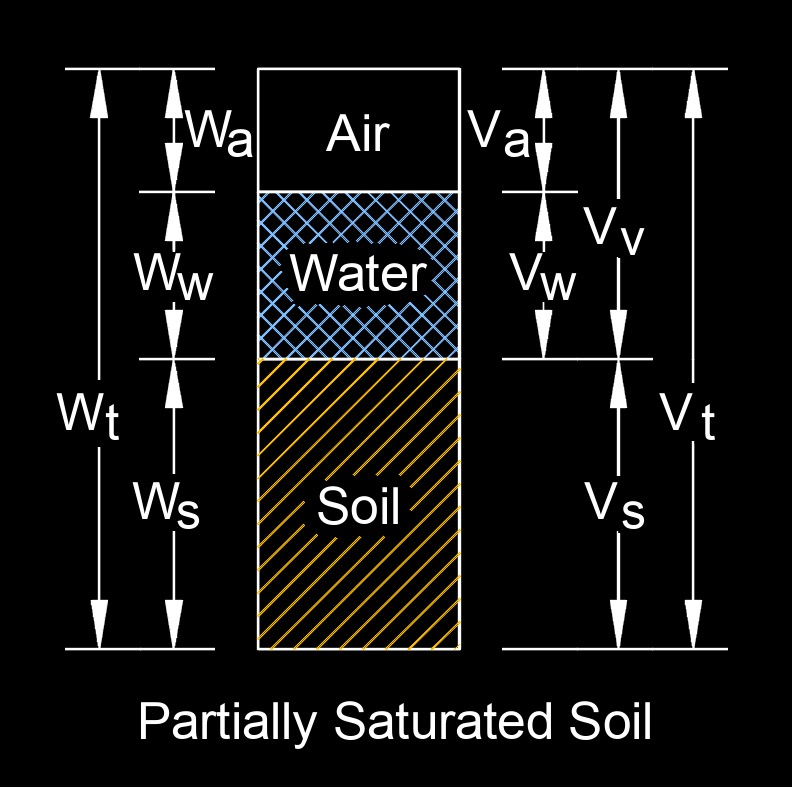Void Ratio
Void Ratio Formula |
||
|
\( e \;=\; \dfrac{ V_v }{ V_s }\) (Void Ratio) \( V_v \;=\; e \cdot V_s \) \( V_s \;=\; \dfrac{ V_v }{ e }\) |
||
| Symbol | English | Metric |
| \( e \) = Void Ratio | \(dimensionless\) | \(dimensionless\) |
| \( V_v \) = Volume of Voids | \(ft^3\) | \(m^3\) |
| \( V_s \) = Volume of Solids | \(ft^3\) | \(m^3\) |
 Void ratio, abbreviated as e, a dimensionless number, is the ratio of the volume of voids to the volume of solids. It is a measure of how much space is occupied by voids relative to the solid particles in a given volume of soil.
Void ratio, abbreviated as e, a dimensionless number, is the ratio of the volume of voids to the volume of solids. It is a measure of how much space is occupied by voids relative to the solid particles in a given volume of soil.
The void ratio is a fundamental property of soil that influences its behavior, including its compressibility, permeability, and shear strength. It is often used to classify and characterize different types of soils, such as sands, silts, and clays. In general, a low void ratio indicates that the soil is denser, with fewer voids and more solid particles, while a high void ratio suggests that the soil is looser or less dense, with more voids and fewer solid particles.
The void ratio is an important parameter in geotechnical engineering for analyzing and designing structures and foundations, estimating soil settlement, and evaluating soil stability. It helps engineers understand the behavior of soils under different loading and environmental conditions and provides insights into the compaction, permeability, and drainage characteristics of the soil.

